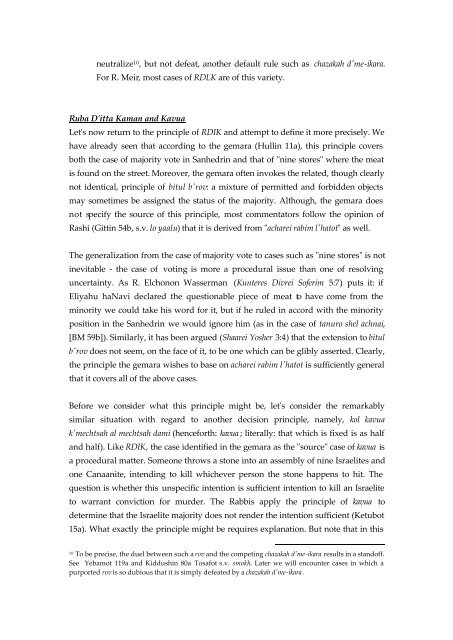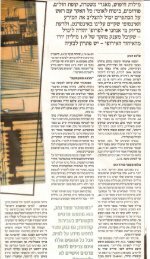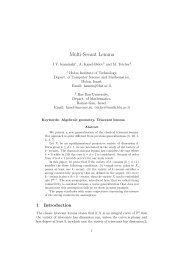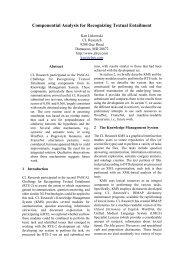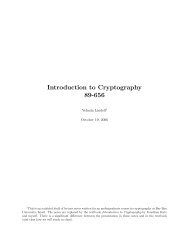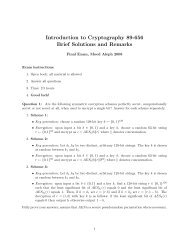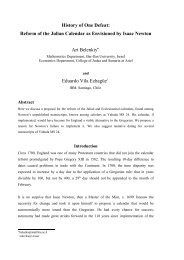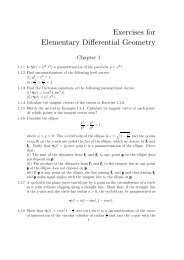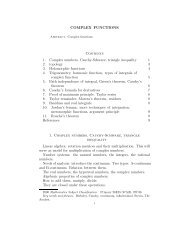Resolving Uncertainty: A Unified Overview of Rabbinic Methods
Resolving Uncertainty: A Unified Overview of Rabbinic Methods
Resolving Uncertainty: A Unified Overview of Rabbinic Methods
You also want an ePaper? Increase the reach of your titles
YUMPU automatically turns print PDFs into web optimized ePapers that Google loves.
neutralize 10 , but not defeat, another default rule such as chazakah d'me-ikara.<br />
For R. Meir, most cases <strong>of</strong> RDLK are <strong>of</strong> this variety.<br />
Ruba D'itta Kaman and Kavua<br />
Let's now return to the principle <strong>of</strong> RDIK and attempt to define it more precisely. We<br />
have already seen that according to the gemara (Hullin 11a), this principle covers<br />
both the case <strong>of</strong> majority vote in Sanhedrin and that <strong>of</strong> "nine stores" where the meat<br />
is found on the street. Moreover, the gemara <strong>of</strong>ten invokes the related, though clearly<br />
not identical, principle <strong>of</strong> bitul b'rov: a mixture <strong>of</strong> permitted and forbidden objects<br />
may sometimes be assigned the status <strong>of</strong> the majority. Although, the gemara does<br />
not specify the source <strong>of</strong> this principle, most commentators follow the opinion <strong>of</strong><br />
Rashi (Gittin 54b, s.v. lo yaalu) that it is derived from "acharei rabim l'hatot" as well.<br />
The generalization from the case <strong>of</strong> majority vote to cases such as "nine stores" is not<br />
inevitable - the case <strong>of</strong> voting is more a procedural issue than one <strong>of</strong> resolving<br />
uncertainty. As R. Elchonon Wasserman (Kunteres Divrei S<strong>of</strong>erim 5:7) puts it: if<br />
Eliyahu haNavi declared the questionable piece <strong>of</strong> meat to have come from the<br />
minority we could take his word for it, but if he ruled in accord with the minority<br />
position in the Sanhedrin we would ignore him (as in the case <strong>of</strong> tanuro shel achnai,<br />
[BM 59b]). Similarly, it has been argued (Shaarei Yosher 3:4) that the extension to bitul<br />
b'rov does not seem, on the face <strong>of</strong> it, to be one which can be glibly asserted. Clearly,<br />
the principle the gemara wishes to base on acharei rabim l'hatot is sufficiently general<br />
that it covers all <strong>of</strong> the above cases.<br />
Before we consider what this principle might be, let's consider the remarkably<br />
similar situation with regard to another decision principle, namely, kol kavua<br />
k'mechtsah al mechtsah dami (henceforth: kavua ; literally: that which is fixed is as half<br />
and half). Like RDIK, the case identified in the gemara as the "source" case <strong>of</strong> kavua is<br />
a procedural matter. Someone throws a stone into an assembly <strong>of</strong> nine Israelites and<br />
one Canaanite, intending to kill whichever person the stone happens to hit. The<br />
question is whether this unspecific intention is sufficient intention to kill an Israelite<br />
to warrant conviction for murder. The Rabbis apply the principle <strong>of</strong> kavua to<br />
determine that the Israelite majority does not render the intention sufficient (Ketubot<br />
15a). What exactly the principle might be requires explanation. But note that in this<br />
10<br />
To be precise, the duel between such a rov and the competing chazakah d'me-ikara results in a stand<strong>of</strong>f.<br />
See Yebamot 119a and Kiddushin 80a Tosafot s.v. smokh. Later we will encounter cases in which a<br />
purported rov is so dubious that it is simply defeated by a chazakah d'me-ikara.


